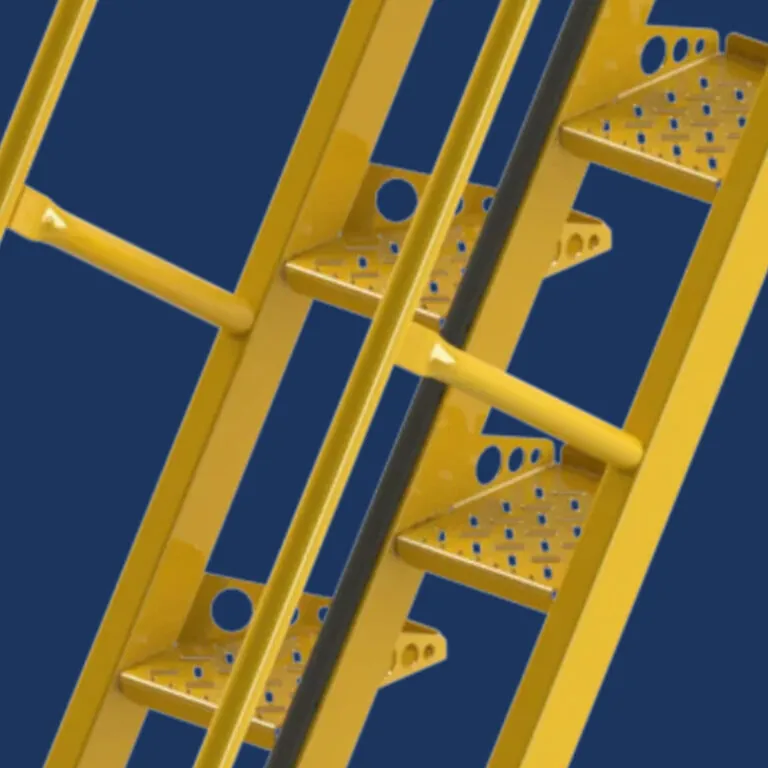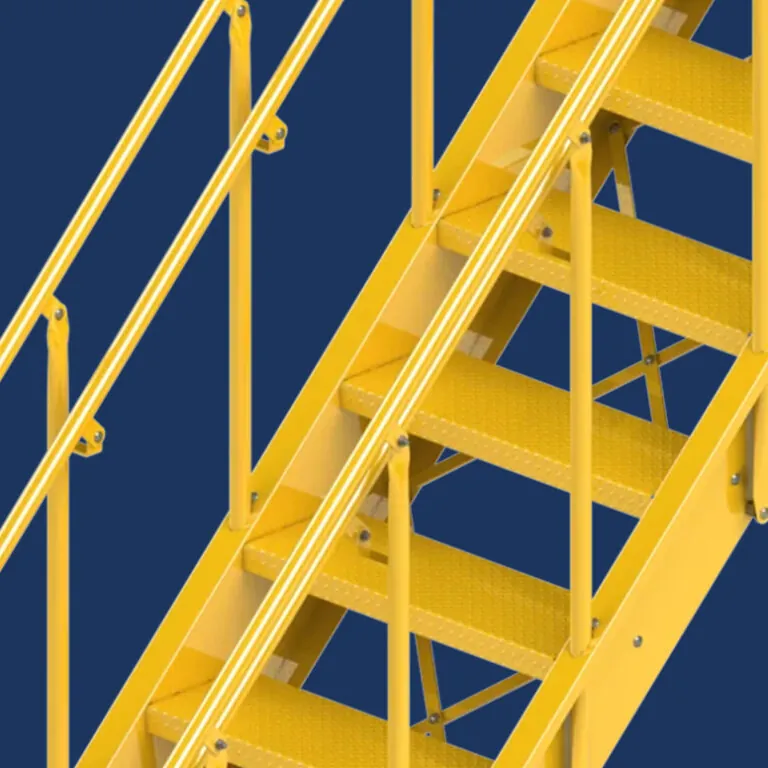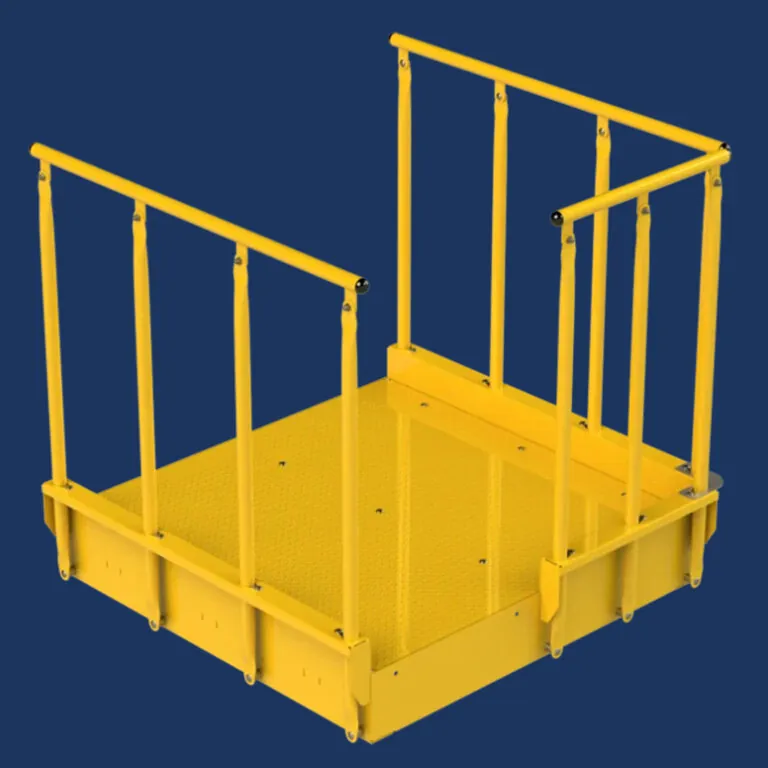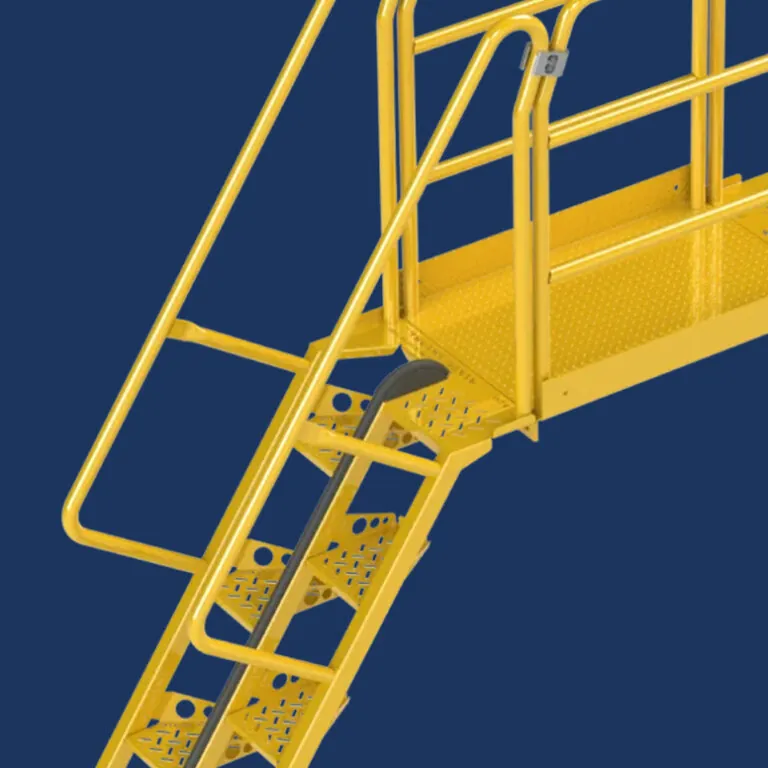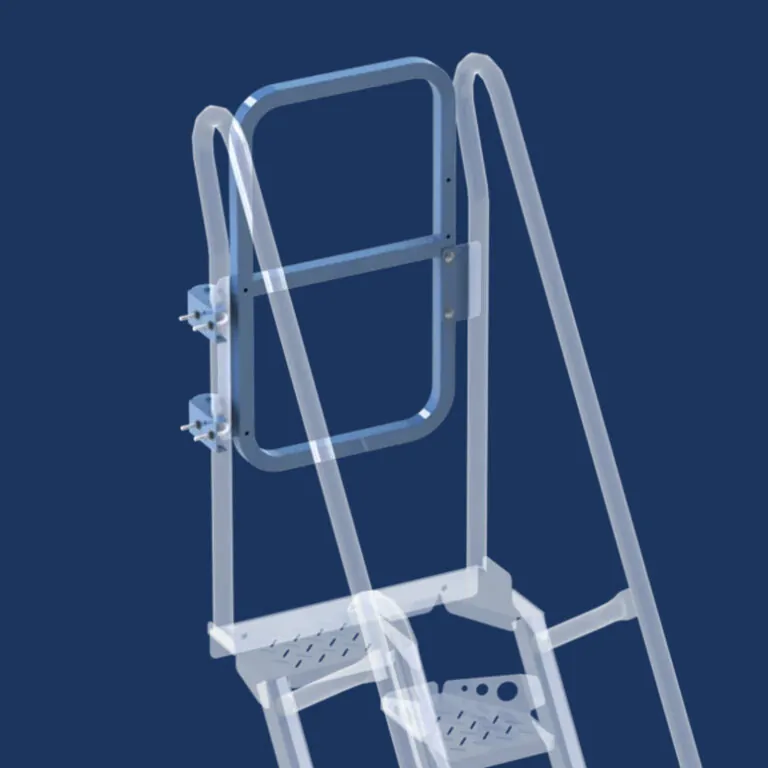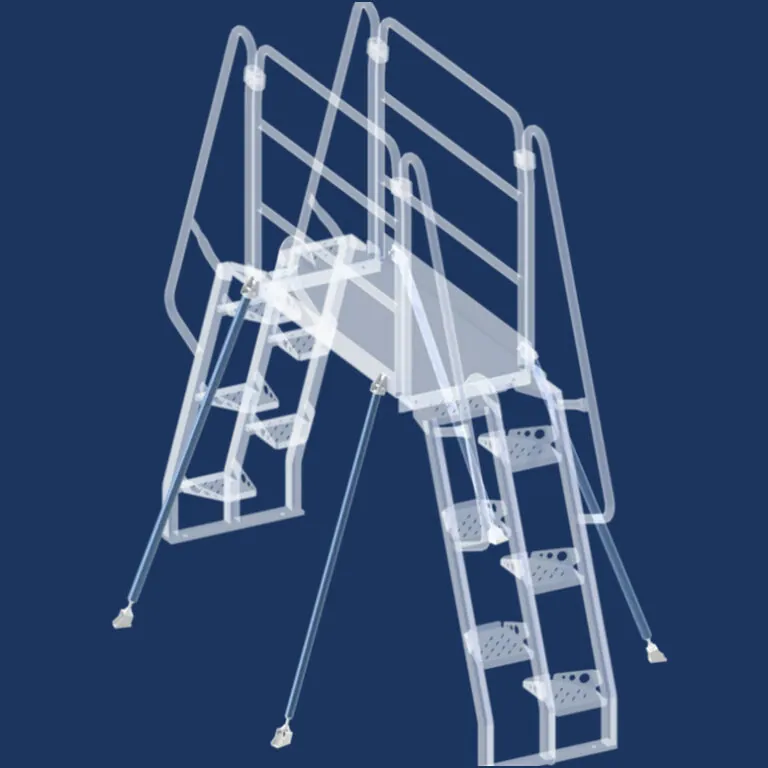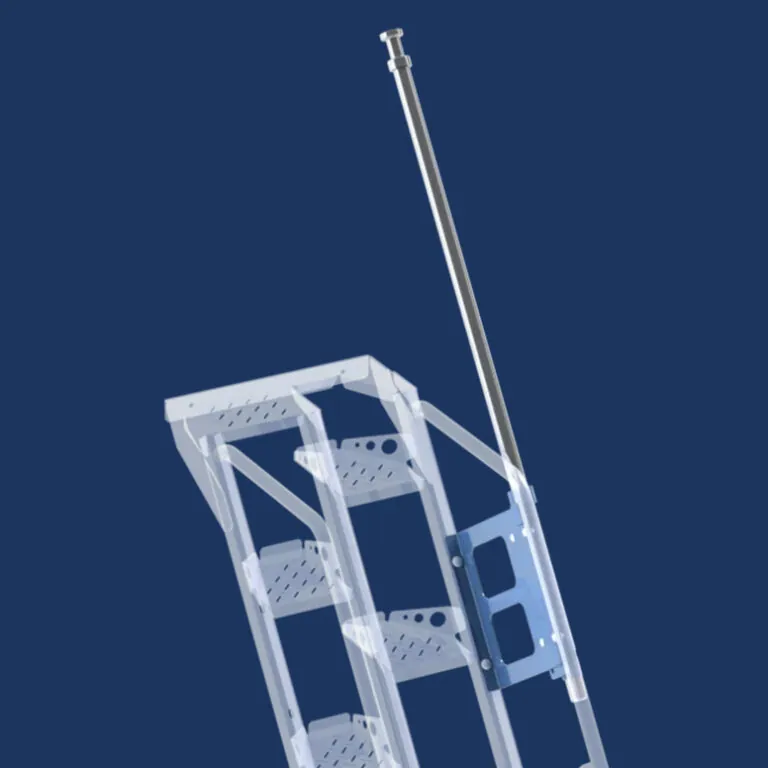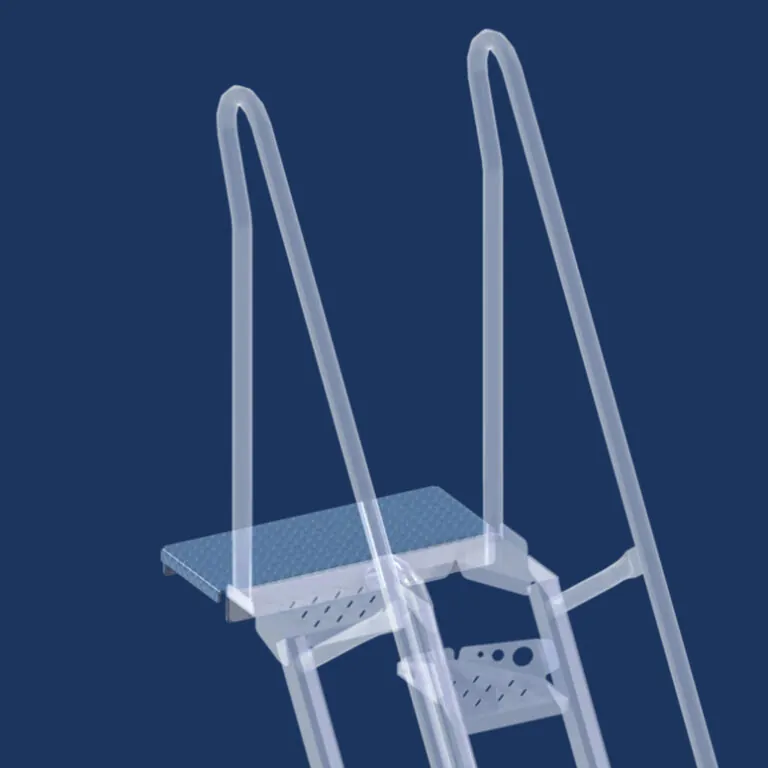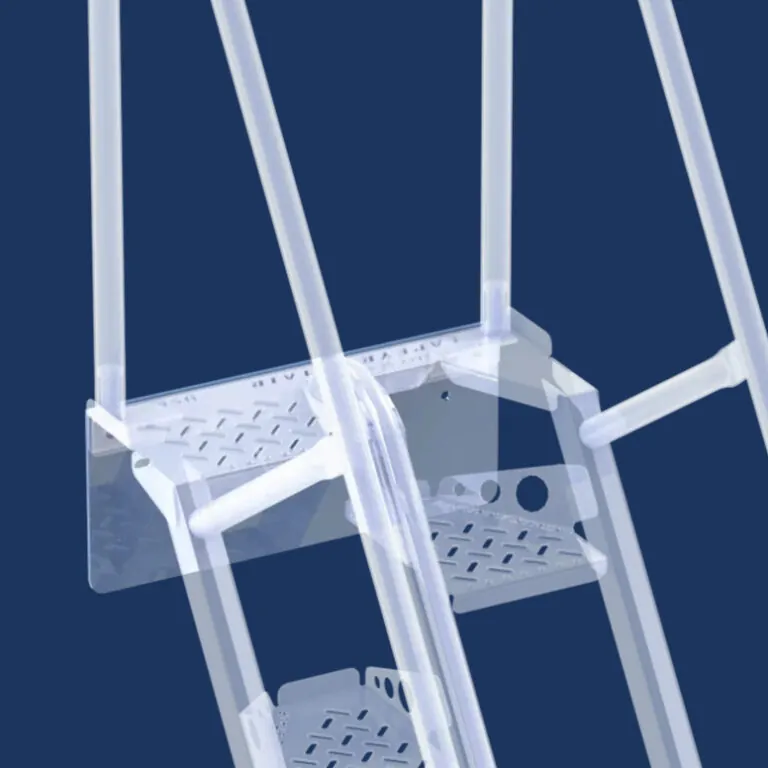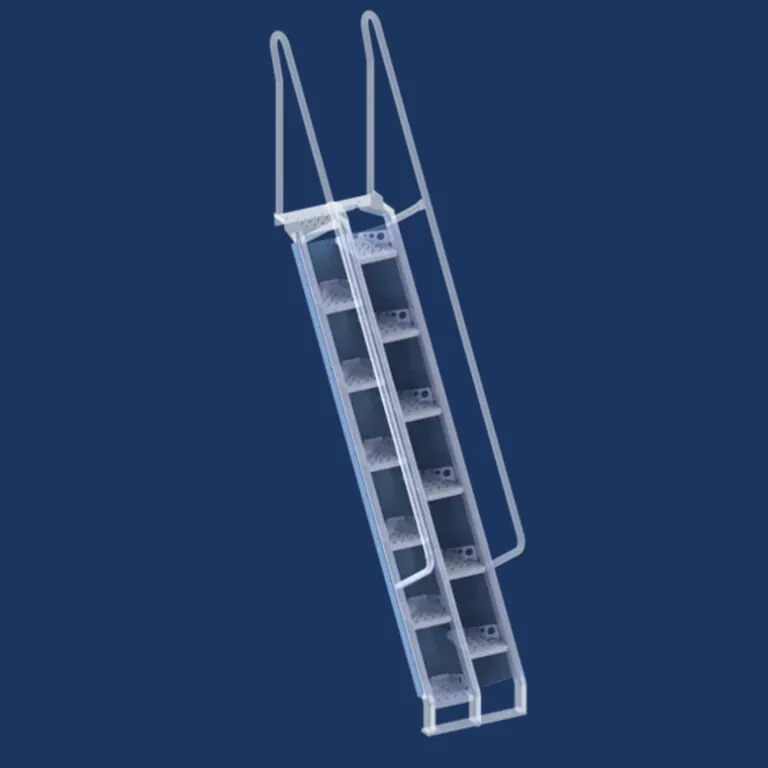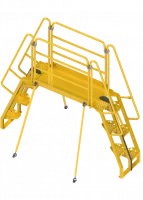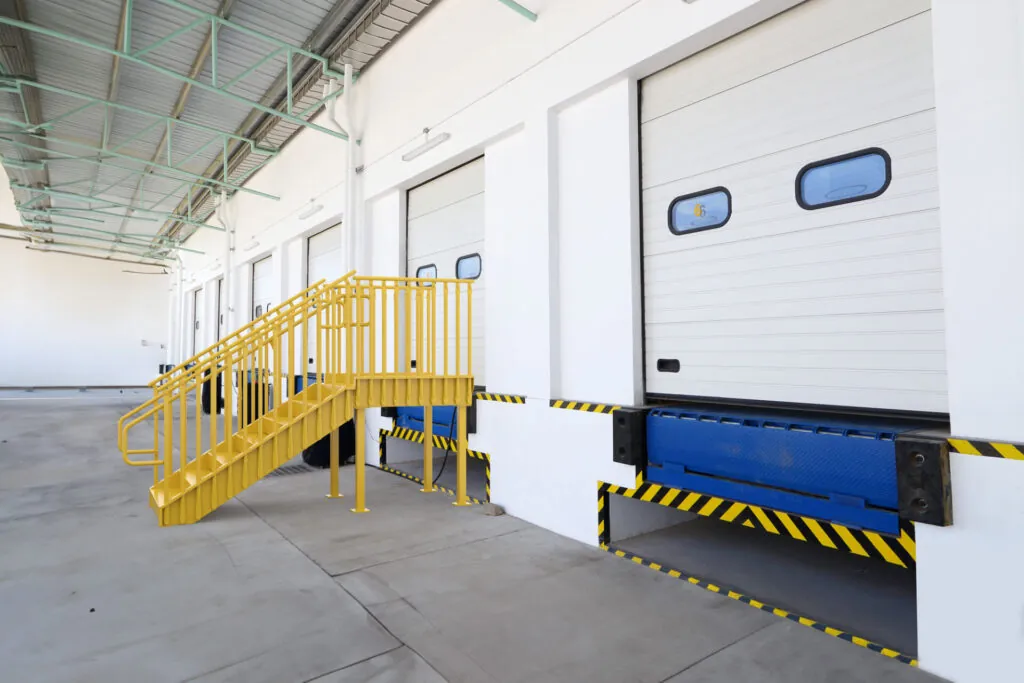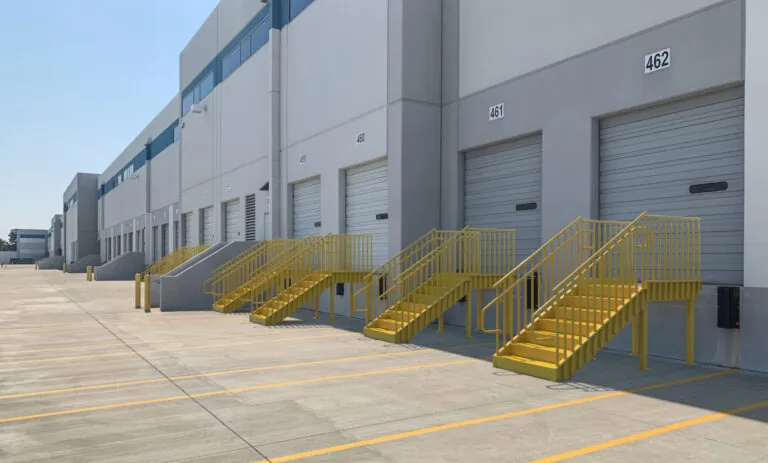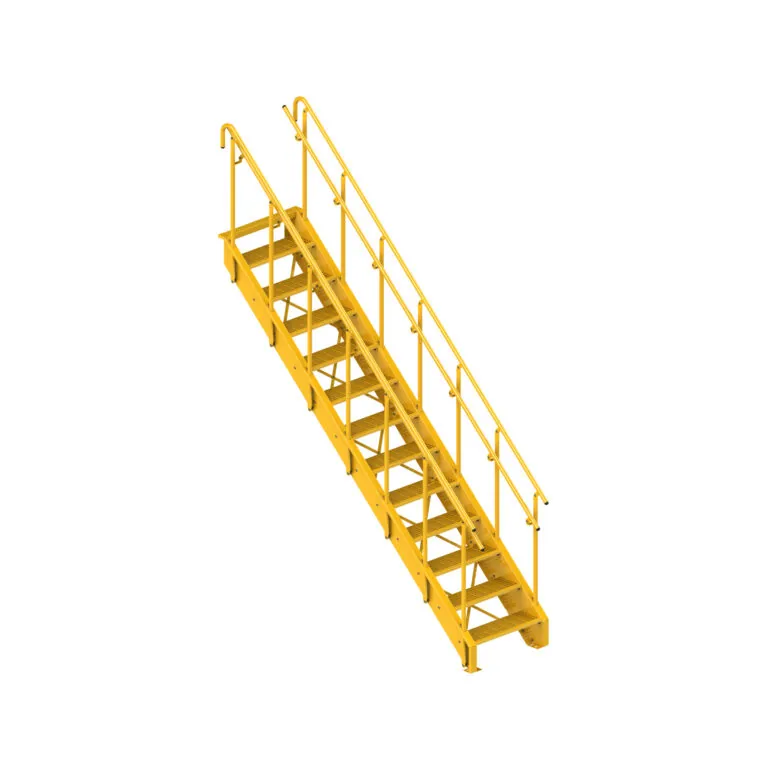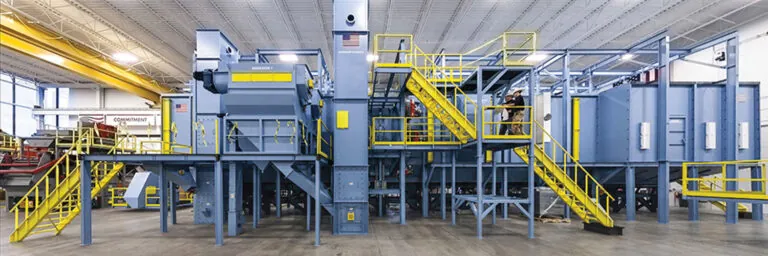Loading docks can be one of the busiest areas in both industrial and commercial buildings. They serve as vital gateways for the movement of goods between trucks and areas of the facility. However, the elevated nature of loading dock platforms necessitates safe and efficient access. This is particularly important for workers tasked with loading and unloading operations. To ensure the safety of personnel and compliance with regulations, it’s essential to understand the requirements set forth by regulatory bodies such as the Occupational Safety and Health Administration (OSHA) and the International Building Code (IBC) concerning loading dock stairs.
Understanding OSHA Regulations
OSHA is the federal agency responsible for ensuring safe and healthful working conditions in the United States. The agency provides guidelines and standards pertaining to workplace safety, including those related to loading dock operations. OSHA does not have specific regulations solely dedicated to loading dock stairs. However, it does outline general requirements for workplace stairs and platforms under its Walking-Working Surfaces standard (29 CFR 1910 Subpart D).
According to OSHA’s standards, stairs used in industrial settings, including loading dock stairs, must meet certain criteria to ensure safety:
Stair Design
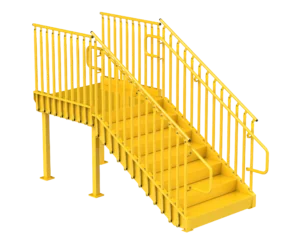
Stairs should be designed and constructed to support their intended load capacity safely. They must be free from defects and capable of withstanding expected loads without failure.
Riser and Tread Dimensions
OSHA mandates specific dimensions for stair risers (vertical height) and treads (horizontal depth) to prevent tripping hazards. The standard requires uniform riser heights and tread depths within a flight of stairs to promote consistency and reduce the risk of falls.
Handrails and Guardrails
Stairs with four or more risers must be equipped with handrails on at least one side to provide support for users. Additionally, guardrails are required along open sides of stairways and platforms to prevent falls from elevated surfaces.
Non-Slip Surfaces
Stair treads should feature non-slip surfaces or be treated with materials to enhance traction and minimize the risk of slips and falls. This is especially in environments where surfaces may become wet or slick.
Visibility and Lighting
Adequate lighting should be provided to ensure clear visibility of stairs and associated hazards. Illumination levels should be sufficient to prevent accidents resulting from poor visibility.
While OSHA’s regulations offer guidance on general stair safety, they do not provide specific requirements explicitly for loading dock stairs. However, adherence to these standards can help ensure loading dock stairs meet essential safety criteria to reduce the risk of accidents and injuries.
Navigating IBC Requirements
In addition to OSHA regulations, compliance with building codes such as the International Building Code (IBC) is essential for the construction and design of loading dock stairs in commercial buildings. The IBC sets forth comprehensive requirements for building design and construction to safeguard occupants and promote structural integrity.
Under the IBC, loading dock stairs are subject to regulations pertaining to means of egress, accessibility, and structural integrity. Specific requirements may vary depending on factors such as building occupancy classification and local jurisdiction. However, key considerations for loading dock stairs under the IBC include:
Egress Requirements
Loading dock stairs must provide safe and accessible means of egress for occupants in the event of an emergency. The IBC outlines criteria for stair design, including width, headroom clearance, and handrail specifications, to ensure efficient evacuation and egress.
Accessibility Standards
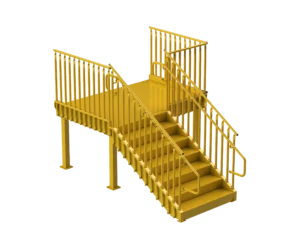
Loading dock stairs should comply with accessibility standards outlined in the Americans with Disabilities Act (ADA) and other relevant regulations to accommodate individuals with disabilities. This may include provisions for ramp access, handrail extensions, and tactile warning indicators for visually impaired users.
Structural Integrity
Stairs leading to and from loading docks must be structurally sound and capable of supporting intended loads. The IBC specifies requirements for materials, construction methods, and load capacities to ensure durability and stability.
Fire Safety
Loading dock stairs may be subject to fire safety regulations outlined in the IBC. These include requirements for fire-rated construction materials and provisions for fire suppression systems in high-risk areas.
By adhering to IBC requirements, designers, builders, and facility managers can ensure that loading dock stairs are designed and constructed to meet rigorous safety and accessibility standards in commercial settings.
Conclusion
Loading dock stairs play a critical role in facilitating safe and efficient access to elevated platforms in industrial and commercial settings. Compliance with OSHA and IBC regulations is essential to ensure that loading dock stairs meet rigorous safety, accessibility, and structural requirements. By understanding and adhering to these regulations, businesses can promote a safer working environment, mitigate liability risks, and safeguard the well-being of employees and suppliers alike. Whether designing new loading dock facilities or retrofitting existing structures, prioritizing compliance with OSHA and IBC requirements is paramount for enhancing loading dock stair safety.

